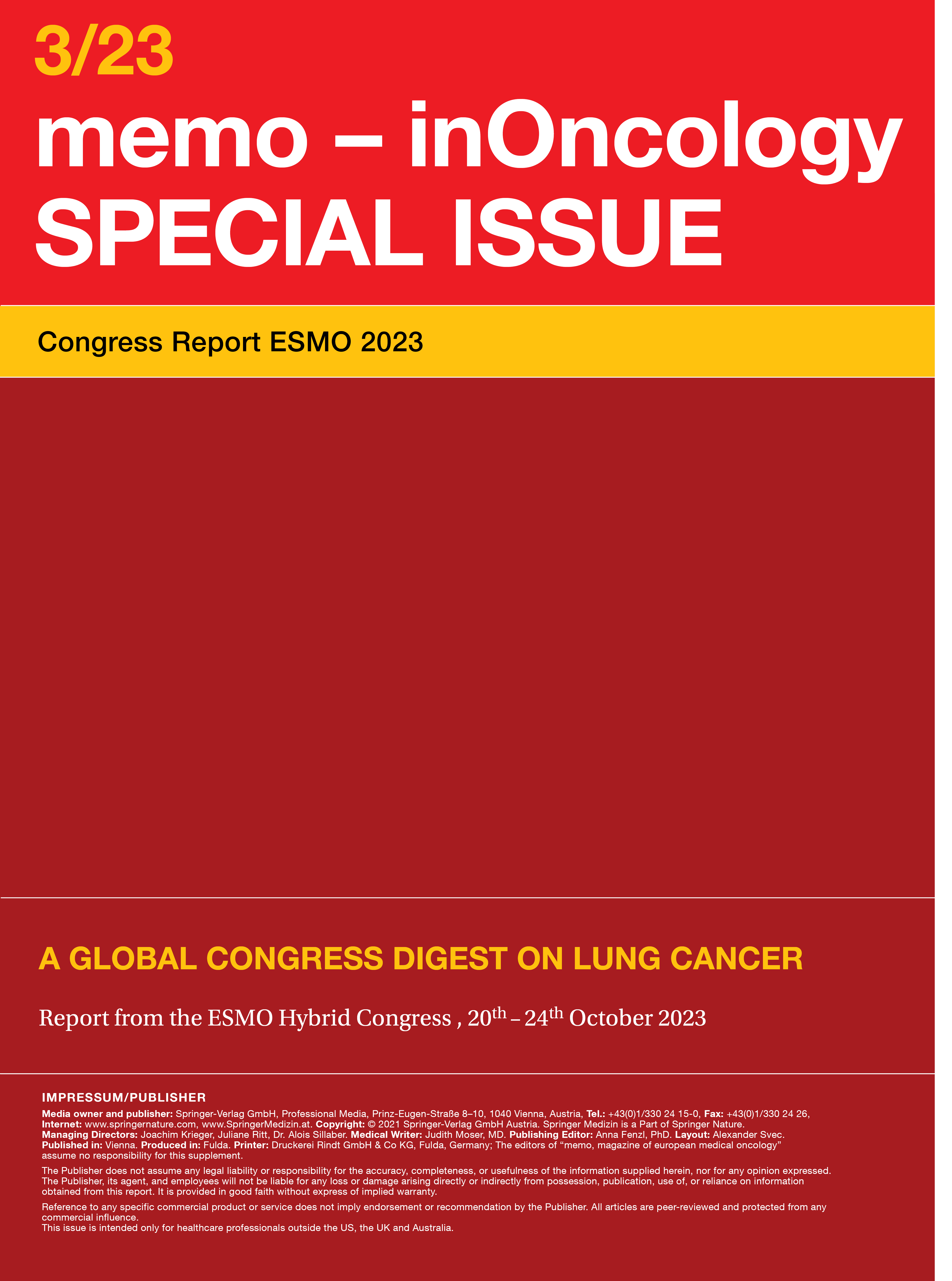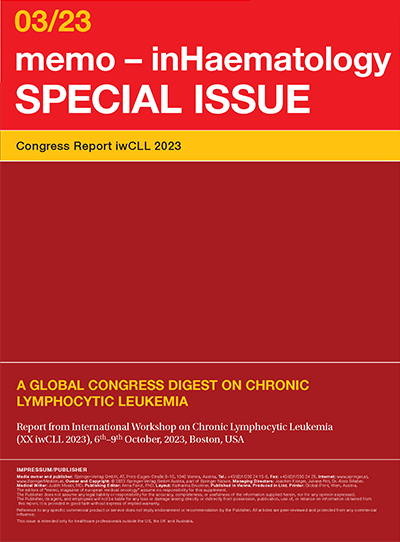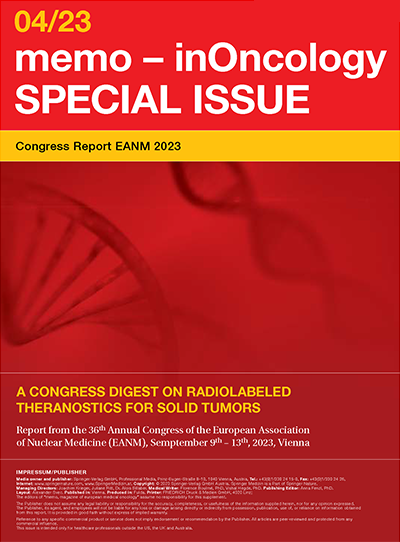memo-inOncology – SPECIAL ISSUE
Find out the latest news from international oncology congresses and stay at the forefront of clinical innovation and advances in lung cancer research.
The memo inOncology Medical education series: keeping oncologists at the forefront of lung cancer research. memo – inOncology Special Issue Preceptorship reports summarise the latest in lung cancer research and treatments to come out of our sponsored Preceptorship meeting series. The Fundamentals of Designing Clinical Trials series arms oncologists with the information they need to plan and conduct an oncology trial.
REGISTER
Get a notification for every published memo – inOncology SPECIAL ISSUE. Register below.
LATEST NEWS
memo – inOncology SPECIAL ISSUE
Congress Report ESMO Lung Cancer 2023
Report from the ESMO Hybrid Congress , 20th – 24th October 2023, Madrid, Spain
memo – inOncology SPECIAL ISSUE
Congress Report iwCLL 2023
Report from International Workshop on Chronic Lymphocytic Leukemia (XX iwCLL 2023), 6th–9th October, 2023, Boston, USA
memo – inOncology SPECIAL ISSUE
Congress Report EANM 2023
Report from the 36th Annual Congress of the European Association of Nuclear Medicine (EANM),
September 9th – 13th, 2023, Vienna
EXPERT VIDEOS
All videointerviews from ASCO/EHA/ICML 2023
Alessandra Tedeschi gives insights into the health-related quality of life data from the ASPEN study conducted in patients with Waldenström macroglobulinemia, discusses the notable results from the extended follow-up of the SEQUOIA study in patients with treatment-naïve chronic lymphocytic leukemia as well as the clinical activity of zanubrutinib in the setting of R/R marginal zone lymphoma while finally depicting her personal highlights from this year’s EHA congress.
Anna Schuh talks about genetic aberrations in subclones in terms of the molecular dynamics of relapse in patients with CLL, the benefits of liquid biopsies as well as the current role and future application of whole-genome sequencing in precision hematology while ultimately depicting her personal highlights from this year’s EHA congress.
Paolo Strati overviews how patient outcomes can be optimized with current therapies in relapsed or refractory diffuse large B-cell lymphoma in later lines and outlines which innovative approaches might become available in the long run for the treatment of R/R DLBCL. Finally, he explains what can be achieved today in patients with follicular lymphoma and high tumor burden and depicts his personal highlights from this year’s EHA congress.
Philipp Staber explains the role of functional drug testing in the treatment of patients with hematologic diseases, shares the rationale of the EXALT-2 trial as well as his thoughts on future developments in the field of precision medicine. Finally, he gives insights in the current research topics of the EHA SWG-Precision Hematology and their goal for the next five years.
EXPERT VIDEOS
All videointerviews from ASCO Lung Cancer 2023
John Heymach provides an overview on the expected benefits of HER2-selective tyrosine kinase inhibitors compared to anti-HER2-antibodies while highlighting the Beamion Lung 1 data. Moreover, he talks about RET inhibitor sensitivity and resistance in lung cancer and shares which study, presented at this year’s ASCO congress, is most likely to impact standard of care treatment in NSCLC.
Marjorie G. Zauderer explains the correlations between histopathological features and genetics in the setting of malignant mesothelioma, and the potential benefit of studying therapeutically relevant subgroups of patients separately, critically discusses trails using PD-1 checkpoint inhibition in unresectable mesothelioma and once again encourages everyone to explore the poster sessions at the major conferences to interact with colleagues around the world.
A CONGRESS RESOURCE
For Oncologists and Haematologists







